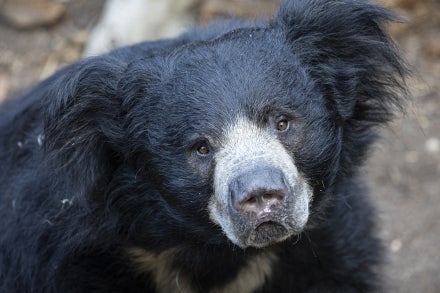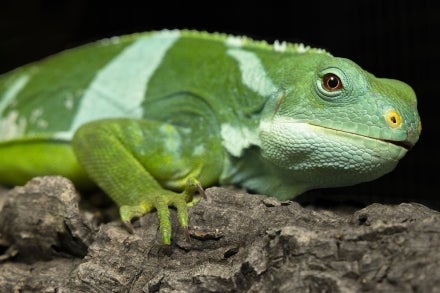SAN DIEGO (April 30, 2025) – Many are aware of the dire challenges with plastic waste polluting the ocean, but new research shows it may harm wildlife in ways not previously understood. In a new study just published in the journal Environmental Pollution, researchers from the University of California, Santa Cruz and San Diego Zoo Wildlife Alliance found that plastic swallowed by northern fulmars— seabirds found in the North Atlantic and North Pacific Oceans—can leak chemicals that interfere with the birds’ hormone systems.
This is the second study from a collaboration between San Diego Zoo Wildlife Alliance and UC Santa Cruz to reveal wild seabirds exposed to ocean plastics may experience endocrine disruption from chemicals released by the plastics inside their bodies. Endocrine disruption can impair fertility, development, and behavior with consequences that threaten species’ survival and ripple through ecosystems. While researchers have long suspected plastics might trigger such effects, by using fulmar endocrine receptors, this study provides the first species-specific evidence in a wild seabird.
“We’ve long known that plastic ingestion can cause physical harm to seabirds, but this study shows it may also have hidden biological effects,” said lead author Liesbeth Van Hassel, whose Ph.D. work at UC Santa Cruz contributed to this study. “What’s especially concerning is that these chemicals don’t just pass through—they interact with key hormone receptors in the body.”
In lab tests, researchers soaked plastic from the birds’ stomachs in solvents to draw out chemicals. They then tested those chemicals on cloned hormone receptors from northern fulmars to see if they disrupted hormonal activity. Nearly half the birds (13 of the 27) had plastic that either activated or blocked hormone receptors.
Strikingly, the fulmar receptors mirrored how human hormone receptors react to the same chemicals, raising red flags for species across the food web. Notably, this response was unrelated to the type of plastic, but the authors suggest the chemical additives the plastics contained—like BPA and phthalates, known hormone disruptors in humans and other animals—were responsible.
“Some of these plastics kept leaching active chemicals for two weeks,” Christopher Tubbs, co-author and Associate Director of Reproductive Sciences at San Diego Zoo Wildlife Alliance. “This suggests seabirds are not only swallowing harmful materials—they may be getting a continuous dose of hormone-altering chemicals.”
This research was made possible through this incredible collaboration and partnership. San Diego Zoo Wildlife Alliance is committed to continuing to collaborate with like-minded partners like UC Santa Cruz to uncover hidden threats to wildlife and use science to protect species worldwide.
About San Diego Zoo Wildlife Alliance San Diego Zoo Wildlife Alliance, a nonprofit conservation leader, inspires passion for nature and collaboration for a healthier world. The Alliance supports innovative conservation science through global partnerships and groundbreaking efforts at the world-famous San Diego Zoo and San Diego Zoo Safari Park, both leading zoological institutions and accredited botanical gardens. Through wildlife care expertise, cutting-edge science and continued collaboration, more than 44 endangered species have been reintroduced to native habitats. The Alliance reaches over 1 billion people annually through its two conservation parks and media channels in 170 countries, including San Diego Zoo Wildlife Explorers television, available in children’s hospitals across 14 countries. Wildlife Allies—members, donors and guests—make success possible.
About UC Santa Cruz A global research university, UC Santa Cruz is part of the world’s most celebrated system of public higher education, and stands among the most renowned institutions of higher learning. Leading at the intersection of innovation and social justice, UC Santa Cruz faculty and students conduct transformative research and scholarship that serves society. Undergraduate students experience a small liberal-arts college environment with the depth and rigor of a major research university through the pairing of high-impact research with 10 tight-knit residential colleges—a rare combination among U.S. public universities.



